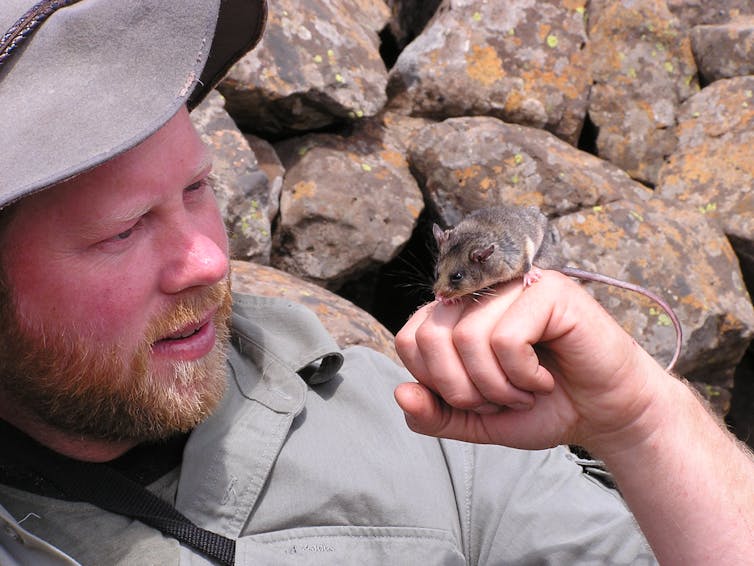
As good news stories goes, this is one of the best. Mountain pygmy possums are one of the most critically endangered species in Australia, and possibly the cutest. The recent genetic rescue of the Mt. Buller population has been achieved through translocation – releasing wild caught males from another population to introduce genetic diversity.
Last week this story made the news and was featured on the TV show Catalyst.
Unlike other pygmy possums, which live in forests and nest in the trees, the mountain pygmy possum lives under boulder fields high in the alps. Mountain pygmy possums do not like to emerge from their rocky enclaves, and will only do so voluntarily under dense shrub cover.
Ski field developments on Mt. Buller meant their natural habitat was highly fragmented by roads and ski runs which had been cleared of rocks. This was done before we knew that the possums were there: the population on Mt. Buller was not discovered until about 1996. Male possums were forced to cross roads and open ski runs to find mates, which exposed them to predation. With only a few males surviving each year, the Mt. Buller population became inbred and eventually succumbed to a severe genetic decline.
Captive breeding was considered the best way to help the species recover. But breeding up enough animals to release into the wild proved difficult in practice, so in 2010 a few male possums from the healthy population at Mt. Hotham were introduced to Mt. Buller and two hybrid offspring were produced, proving that this strategy might be successful.
In September 2011, in time for the breeding season, six males from Mt. Hotham were released onto Mt. Buller, and when the young possums were trapped and tested for genetic markers, half of them were found to be hybrids.
In addition, the hybrid juveniles were 15% heavier at the end of summer than the possums whose parents were both from Mt. Buller. This extra weight may be critical to survival for a species that need to put on enough weight over summer to allow them to sleep through the winter.
Translocation, or the release of individuals from a distant location for the purpose of introducing new genes into a population, has not been tried before in Australia. Some scientists think that the mixing of genotypes in this way reduces the distinct characteristics of the populations involved, and should therefore be avoided. But when a population is clearly in decline in both fitness and numbers, there may be no other choice.
Well done to the brave researchers who have given the mountain pygmy possums of Mt. Buller another chance.
